India is experiencing a notable transformation in its energy landscape, driven by the growing prerequisite for sustainable power and reduced reliance on fossil fuels. As one of the world’s fastest-growing economies, the country has set ruthless goals to secure its energy future, protect the environment, and honour its global climate commitments under the Paris Agreement. These include achieving 500 gigawatts (GW) of renewable energy capacity by 2030 and reaching net-zero carbon emissions by 2070.
Solar power has emerged as the cornerstone of this green revolution, thanks to initiatives like the Jawaharlal Nehru National Solar Mission (JNNSM) and government-backed incentives that make renewable investments more gorgeous.
As of October 10, 2024, India achieved a major milestone, surpassing 200 GW of total renewable energy capacity, which now accounts for 46.3% of the nation’s total installed power capacity. Out of this, solar energy alone contributes 90.76 GW (45.1%), highlighting India’s rapid progress in scaling up clean energy infrastructure.
India’s commitment to clean energy is more than just talk; it’s backed by astonishing numbers! The nation’s overall renewable energy capacity (not counting large dams) has hit roughly 227 GW.
The real headline? Solar power has experienced a mind-blowing 4,000% surge in capacity! This unbelievable growth in solar, along with main add-ons in wind and other green sources, is quickly transforming the country’s power landscape.
As of August 2025, clean energy forms a critical part of India’s total power grid, which has reached a noteworthy 495.55 GW.
Overview of India’s Renewable Energy
However, India’s renewable drive goes far beyond solar power. The country is also expanding into wind, hydro, biomass, and green hydrogen, creating a well-balanced and diversified energy mix.
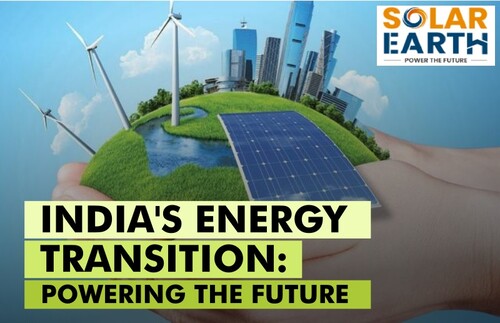
Wind energy continues to thrive in states like Tamil Nadu and Gujarat, while hydropower ensures grid stability and reliability. Meanwhile, advancements in smart grids, energy storage technologies, and digital energy management systems are helping to overcome challenges like supply fluctuations.
Through these combined efforts, India is increasingly positioning itself as a global leader in sustainable energy, one that is resolute to fuel economic growth while safeguarding the planet for future generations.
India faces an enormous energy challenge: its power demand is set to grow faster than any other country’s. To meet this surge sustainably, the vast majority of new energy must come from low-carbon, renewable sources.
This national ambition is a major global climate signal. India has committed to net-zero emissions by 2070 and a target of 50% renewable electricity by 2030.
A Global Renewable Powerhouse
India’s progress is undeniable. The country continues to hold a fourth-place global ranking for wind capacity, solar capacity, and total renewable energy capacity.
In a landmark achievement, India has officially surpassed Japan to become the world’s third-largest solar energy producer, generating 1,08,494 GWh of solar power. As the market with the fastest growth in renewable electricity, new capacity additions are expected to double by 2026.
This momentum is attracting serious investor interest, especially as India looks to supply its own massive energy needs, projected to hit 15,820 TWh by 2040.
The Scale of the Transformation
The sector’s growth is accelerating rapidly, posting a CAGR of 14.93% between FY16 and June 2025. As of June 2025:
- Total installed renewable capacity stood at 184.6 GW.
- 48.2% of the country’s total power capacity now comes from non-fossil fuel sources.
- Solar energy led capacity expansion, with a significant 23.83 GW added in FY25 alone.
States are leading the charge: Madhya Pradesh, for example, has already reached 11.28 GW of installed renewable capacity, with a strong mix of solar and wind. Meanwhile, the wind sector is making great strides toward its ambitious 100 GW target by 2030, backed by a strong domestic manufacturing capacity of over 18 GW for wind turbines.
To secure future reliability, the government is also fast-tracking hydropower, with 15 GW of hydro projects currently under construction that will boost total capacity from 42 GW to 67 GW by 2031-32.
Introduction to India’s Solar Power Boom
Installed Capacity and Future Targets
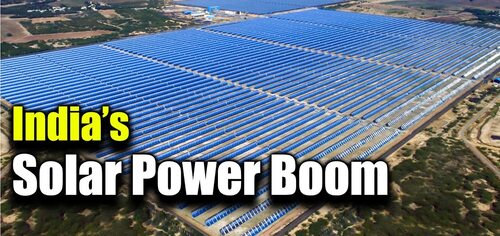
India’s solar energy journey gained momentum with the launch of the Jawaharlal Nehru National Solar Mission (JNNSM) in 2010. This landmark initiative initially set a goal of achieving 20 GW of solar capacity by 2022, a target that was soon revised upward as the potential of solar power became evident.
Backed by supportive policies, financial incentives, and strong investor confidence, solar energy quickly became the cornerstone of India’s renewable energy growth.
India’s first major solar program, the Jawaharlal Nehru National Solar Mission (JNNSM), was a colossal success, a true victory for clean energy!
While the initial goal was to reach 22,000 MW, the Mission absolutely shattered that target. By August 2023, India’s installed solar capacity had reached an incredible over 63,000 MW.
Although the original mission has officially concluded, its impact lives on. Fueled by strong government policies and cheaper technology, the JNNSM created the foundation for India’s massive solar industry and paved the way for the determined clean energy goals the country pursues today.
Today, India boasts an impressive 90 GW of installed solar capacity, accounting for nearly 45% of the nation’s total renewable energy mix. This amazing growth reflects the country’s commitment to transitioning toward a cleaner and more sustainable energy future.
Between 2014 and 2023, India’s solar capacity expanded at an unprecedented pace, driven by falling photovoltaic (PV) technology costs, a favorable investment climate, and the nation’s natural advantage of receiving around 300 sunny days each year.
States such as Rajasthan, Gujarat, and Madhya Pradesh have emerged as solar power leaders, hosting some of the largest solar projects in the world. The Bhadla Solar Park in Rajasthan, one of the world’s largest solar parks with a capacity of 2.2 GW stands as a testament to India’s determination to scale up its renewable infrastructure.
India is Building a 500 GW Green Energy Superpower
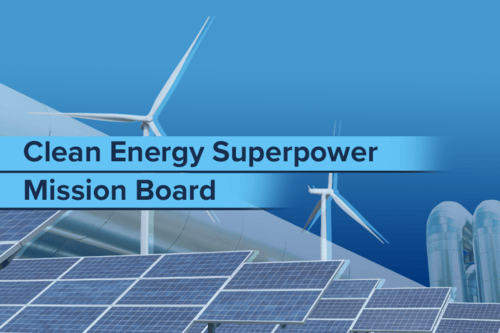
Looking ahead, India’s long-term goal is to achieve 280 GW of solar capacity by 2030, making solar energy the dominant force in its renewable energy portfolio. This target forms a crucial part of the broader national objective to reach 500 GW of total renewable capacity by the same year.
India has set out a roadmap for a radical clean energy transformation! By 2030, the country is aiming for a massive 500 GW of power capacity from non-fossil fuel sources, with solar power leading the charge by contributing a huge chunk of that, 280 GW.
These aren’t just energy goals; they’re climate commitments. By the same year, India plans to slash the intensity of its greenhouse gas emissions by 45% (compared to 2005 levels). Eventually, the country is committing to achieving net-zero emissions by 2070.
However, these targets represent more than just numbers. They symbolize India’s vision for energy independence, reduced reliance on imported fuels, and a persistent promise to global climate action. Through its solar revolution, India is not only illuminating homes and industries but also leading the charge toward a greener and more robust future.
To achieve these ambitious solar targets, India has embraced a balanced approach that combines large-scale solar projects with decentralised rooftop solutions. On one hand, massive solar parks, each with a capacity of over 1 GW, are helping to reduce costs through economies of scale and expand renewable energy access across regions.
On the other hand, rooftop solar systems are empowering households, businesses, and institutions to generate their own clean electricity and contribute to the national grid.
India’s $2.4 Billion Bet on Solar, Wind, and Green Hydrogen
To encourage greater participation and investment, the government has rolled out a range of incentives, including accelerated depreciation benefits, viability gap funding, and affordable financing options. These measures are designed to make solar projects more financially viable and attract both domestic and international investors.
Beyond just installation, India is also focusing on building a robust solar ecosystem that supports manufacturing, installation, and maintenance. By strengthening these pillars, the country is paving the way for a self-reliant and sustainable green energy future, driving economic growth while reducing its carbon footprint.
Policy and Regulatory Support
India’s impressive growth in solar power has been strongly shaped by its robust policy and regulatory framework. The government has introduced a range of initiatives that make solar energy projects more attractive and financially viable, encouraging both domestic and global investors to participate in the clean energy transition.
One of the cornerstone programmes is the Solar Park Scheme, which provides financial assistance to states for developing large-scale solar parks. These parks help create ready-to-use infrastructure for project developers, reducing risks and ensuring faster implementation.
The Solar Energy Corporation of India (SECI) has also been pivotal in driving solar expansion through transparent auctions, which have led to record-low tariffs and made solar power one of the most affordable energy sources in the country. In some auctions, tariffs have dropped below ₹2.50 (US$0.030) per kWh, making solar energy even cheaper than conventional coal-based power.
On the international front, India’s leadership role in the International Solar Alliance (ISA) has strengthened global cooperation in the renewable sector. Through this platform, India has attracted foreign investment, technical expertise, and collaborative opportunities that continue to accelerate the growth of its solar industry.
To ensure that solar energy benefits reach the broader population, the government launched the PM Surya Ghar: Muft Bijli Yojana (originally announced as PM Suryodaya Yojana 2024).
Officially launched on February 13, 2024, with a budget allocation of ₹75,021 crore (approximately US$9 billion), this initiative aims to install solar panels on one crore households across India. The program is designed to empower middle- and lower-income families by reducing their dependence on the grid and lowering electricity costs.
Under this scheme, households can generate their own power through rooftop solar systems, receiving up to 300 units of free electricity each month. Furthermore, families can earn ₹17,000 to ₹18,000 (US$204–216) annually by selling surplus electricity back to the grid.
India is investing heavily to help ordinary citizens get “Muft Bijli” (Free Electricity) from the sun! The government’s prevalent PM Surya Ghar scheme is being supercharged with a budget of ₹20,000 crore in the 2025-26 Union Budget, an 80% increase to speed up installations.
The clear mission is to see 10 million homes across the country with rooftop solar panels by March 2027. To encourage participation, the scheme provides attractive subsidies: you can get 60% of the cost covered for smaller systems (up to 2kW) and 40% covered for medium systems (between 2kW and 3kW).
Through such progressive policies, India is not only expanding its renewable capacity but also ensuring that the benefits of solar energy reach every level of society, creating a cleaner, more inclusive, and energy-secure future.
Technology and Innovation
Technological innovation has been a driving force behind India’s rapid progress in the solar energy sector. The country has made significant strides in photovoltaic (PV) technology, adopting modern and efficient systems that maximize power generation while reducing costs.
Most of India’s current solar installations use monocrystalline and polycrystalline PV modules. Of these, monocrystalline cells are gaining popularity due to their higher efficiency and better performance in limited space.
In addition, India is increasingly turning to bifacial solar modules, which capture sunlight from both sides of the panel, boosting overall electricity output and improving return on investment.
Beyond large-scale solar farms, India is also promoting decentralised solar solutions such as rooftop systems and solar-powered agricultural pumps. These technologies are transforming rural and remote areas by providing clean, reliable electricity and reducing dependence on traditional energy sources.
Another area of innovation is floating solar technology, which involves installing solar panels on water surfaces like reservoirs and lakes. This approach helps conserve land, reduce water evaporation, and improve energy efficiency.
A standout example is the 100 MW floating solar project in Ramagundam, Telangana, one of the largest in India, which demonstrates the vast potential of such systems.
These advancements reflect India’s commitment to innovation and sustainability. By embracing cutting-edge solar technologies, the country is not only strengthening its renewable energy infrastructure but also laying the groundwork for a smarter, greener, and more resilient energy future.
Alternatives to Solar Energy in India’s Renewable Energy Landscape
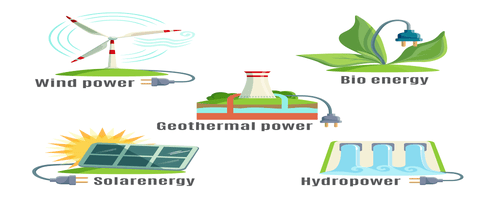
India’s renewable energy journey extends far beyond solar power. The country is harnessing a diverse mix of clean energy sources, including wind, hydro, biomass, and new frontiers like green hydrogen.
This well-rounded approach not only enhances energy security but also strengthens the nation’s ability to manage changing regional resources and energy demands. While solar remains a cornerstone, these complementary sources together form a strong, resilient, and sustainable energy network for the future.
Wind Power
India’s wind energy journey took off in the 1990s and has grown steadily ever since, especially in wind-rich states like Tamil Nadu, Gujarat, and Maharashtra. As of October 10, 2024, the country’s wind energy capacity reached about 47.3 GW, accounting for 23.5% of India’s total installed renewable energy.
This makes wind power the nation’s second-largest renewable source, right after solar. India also holds the fourth spot globally in wind power capacity. Government efforts, such as the National Wind-Solar Hybrid Policy, are driving innovation by encouraging projects that combine wind and solar generation, making better use of land and ensuring a more stable, reliable energy supply.
In 2014, India’s wind power capacity stood at 21.0 GW. A decade later, by 2024, this figure more than doubled to 47.3 GW, a remarkable achievement that underscores the country’s rapid progress in renewable energy development.
India is catching major wind in its clean energy sails! As of September 30, 2025, the country’s total installed wind power capacity has reached an impressive 53.1 GW (53,123.80 MW). This marks a solid increase over the earlier months of 2025, with 442.60 MW added in September alone!
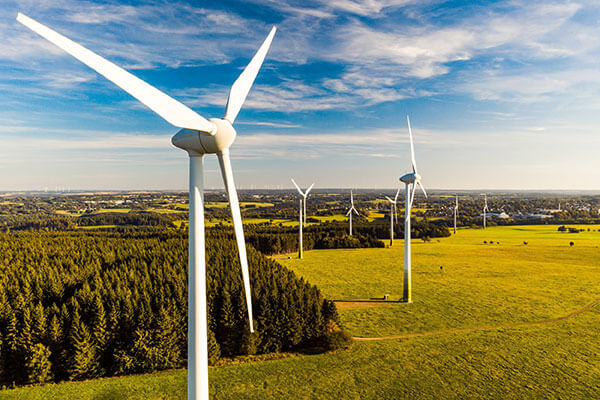
This powerful growth has placed India in the global top tier, the nation now ranks fourth worldwide in terms of installed wind capacity. Much of this capacity is concentrated in just five states: Gujarat, Tamil Nadu, Karnataka, Rajasthan, and Maharashtra, which are leading the charge to harness the power of the wind.
Looking ahead, India aims to reach 100.0 GW of wind capacity by 2030, reflecting its strong commitment to clean energy expansion. This impressive growth is being driven by supportive government policies and a growing focus on hybrid energy systems that combine wind and solar power for greater efficiency and smarter land use.
The National Wind-Solar Hybrid Policy has also encouraged the adoption of cutting-edge innovations in the wind energy sector, including bladeless wind turbines. Unlike traditional turbines with large rotating blades, which can be noisy, costly to maintain, and pose risks to birds and wildlife, bladeless turbines generate electricity through vortex-induced vibrations.
They are quieter, smaller, easier to maintain, and ideal for urban or residential settings where space and noise are major concerns. Their compact design also helps address land acquisition challenges that often arise with conventional wind farms.
In addition, India is turning its attention to offshore wind energy, particularly along the coasts of Gujarat and Tamil Nadu, where strong and steady wind conditions prevail. The government has set an ambitious goal of achieving 30 GW of offshore wind capacity by 2030, supported by public investments and global collaborations. Together, these initiatives mark a major step toward building a cleaner, more resilient, and technologically advanced energy future for India.
Hydropower Energy
Hydropower has long been a key pillar of India’s energy system, contributing around 47 GW, roughly 12% of the nation’s total power capacity as of October 10, 2024. Valued for its reliability, hydropower plays an important role in stabilising the electricity grid, especially during times when solar and wind generation vary. India is laying the groundwork for a massive green hydrogen manufacturing boom!
Right now, the focus isn’t on burning hydrogen for power, but on producing the clean fuel itself. The government has already awarded production rights for an impressive 862,000 tonnes per year (TPA) of green hydrogen to 19 different companies through the National Green Hydrogen Mission.
To back this huge production effort, the Mission is driving a simultaneous push to add over 100 GW of new renewable energy capacity by 2030, because green hydrogen requires tons of clean power! While the actual capacity to convert this hydrogen back into electricity is small today, the stage is set for India to become a major global supplier of the fuel.

Northern and northeastern rivers, with their strong flow and elevation differences, provide ideal conditions for both large-scale dams and smaller run-of-the-river projects. Together, these installations make hydropower a steady and sustainable component of India’s clean energy mix.
In 2014, India’s installed hydropower capacity stood at 40.5 GW. By 2024, it had grown modestly to 46.9 GW, reflecting steady progress in expanding the nation’s hydropower infrastructure.
Looking ahead, the capacity is expected to rise significantly to 70.0 GW by 2030, a clear indication of India’s continued commitment to strengthening its renewable energy portfolio through hydropower development.
To further improve grid stability and flexibility, India is also investing in pumped storage hydro projects. These systems operate by pumping water into a reservoir during periods of low electricity demand and releasing it through turbines during peak hours.
This technology complements the variable output of solar and wind power, helping to balance energy supply and demand. As a result, pumped storage plays a crucial role in ensuring a more reliable, efficient, and resilient energy grid for the future.
Biomass and Waste-to-Energy
India’s vast agricultural base and rapidly growing cities generate significant amounts of organic waste, a valuable resource for biomass and waste-to-energy projects. Biomass energy, which relies on agricultural residues and forestry by-products, is particularly important in rural regions.
As of October 10, 2024, India had an installed biomass power capacity of 10.7 GW. These projects not only provide electricity to rural communities but also strengthen local energy security while reducing dependence on polluting traditional fuels.
India’s clean energy push includes cleverly utilizing agricultural and industrial waste, known as biomass power. As of April 2025, the total installed biomass capacity reached 10.74 GW.
The vast majority of this power (9.82 GW) comes from bagasse cogeneration, where facilities like sugar mills generate electricity by burning the fibrous leftover material from sugarcane. The remaining 0.92 GW is sourced from other kinds of biomass and waste-to-energy projects, ensuring India maximizes every part of its clean energy resources.
In urban areas, waste-to-energy plants are helping tackle two challenges at once managing municipal waste and generating renewable power. By converting solid waste into electricity, these plants reduce landfill pressure and contribute to a cleaner urban environment.
As of October 10, 2024, India’s waste-to-energy capacity reached 604.49 MW. While biomass and waste-to-energy make up a smaller portion of India’s total renewable capacity, they play a vital role in improving both rural and urban energy access, supporting the country’s broader transition to sustainable and inclusive energy solutions.
Green Hydrogen
Imagine a super-fuel that can clean up the dirtiest parts of our economy; that’s green hydrogen. It’s made simply by using renewable electricity (like solar or wind) to split water, and it’s starting to look like a game-changer. Why? Because it can power things that are tough to clean up, like making steel, cement, and chemicals, which can’t effortlessly run on electricity alone.
India is not waiting around! The government just launched the National Green Hydrogen Mission (approved in January 2023) with a massive $2.4 billion budget. Their goal is ambitious but simple: to turn India into a global leader, not just making green hydrogen for themselves, but producing and exporting it to the entire world!
Focused on Investment and Strategy
So, how is India funding this clean energy push? They’re putting most of the money, a massive $2.1 billion, into a program called SIGHT (Strategic Interventions for Green Hydrogen Transition).
The main goal of SIGHT is simple: make green hydrogen cheaper and more accessible. It does this by boosting our ability to manufacture the necessary equipment (electrolysers) right here in India and ramping up actual hydrogen production.
To keep costs down, SIGHT is using a smart strategy called Mode 2B. Think of it as a huge group purchase: the government gathers the total national demand and then uses a competitive bidding process to ensure they get the most affordable green hydrogen possible. The first round of bidding alone is targeting a huge capacity of 200,000 million tonnes per year.
- The rest of the mission’s $2.4 billion budget is spread across key areas:
- $175.9 million for testing out new pilot projects.
- $48 million for Research and Development (R&D) to continually improve the technology.
- $46.6 million for other crucial support activities.
Global Ambition
India isn’t just planning for its own needs; it wants to be a global exporter of green hydrogen, aiming to grab a piece of the estimated 200 million-tonne global market by 2030. To achieve this, the plan involves creating specialized hydrogen hubs powered by renewables for production, storage, and distribution.
These hubs, built through partnerships between the government and private companies, are a vital step toward cleaning up industrial pollution and cementing India’s role as a major player in the global hydrogen economy.
In Conclusion :
India’s clean energy sector is gearing up for a huge surge, thanks to smart tech and clear policies. We’re getting much better at handling renewable power by focusing on crucial areas like energy storage (think advanced batteries) and creative projects like microgrids and floating solar plants. Plus, using AI and digital tools is making our energy grid much smarter and more efficient at forecasting and managing power.
Of course, challenges exist, like unpredictable weather, getting land for projects, and reliance on imported materials, but these aren’t roadblocks; they’re huge opportunities for Indian innovation! Initiatives like the National Green Hydrogen Mission and the PLI (Production Linked Incentive) scheme are leading the charge.
This isn’t just about turning on more lights; it’s about building an independent, self-reliant clean energy industry. As India races toward its goal of 500 GW of non-fossil fuel capacity by 2030, these developments are boosting energy security, growing the economy, and firmly placing India at the forefront of the global shift to a sustainable future. With continued commitment, India is set to build a resilient, green economy.

